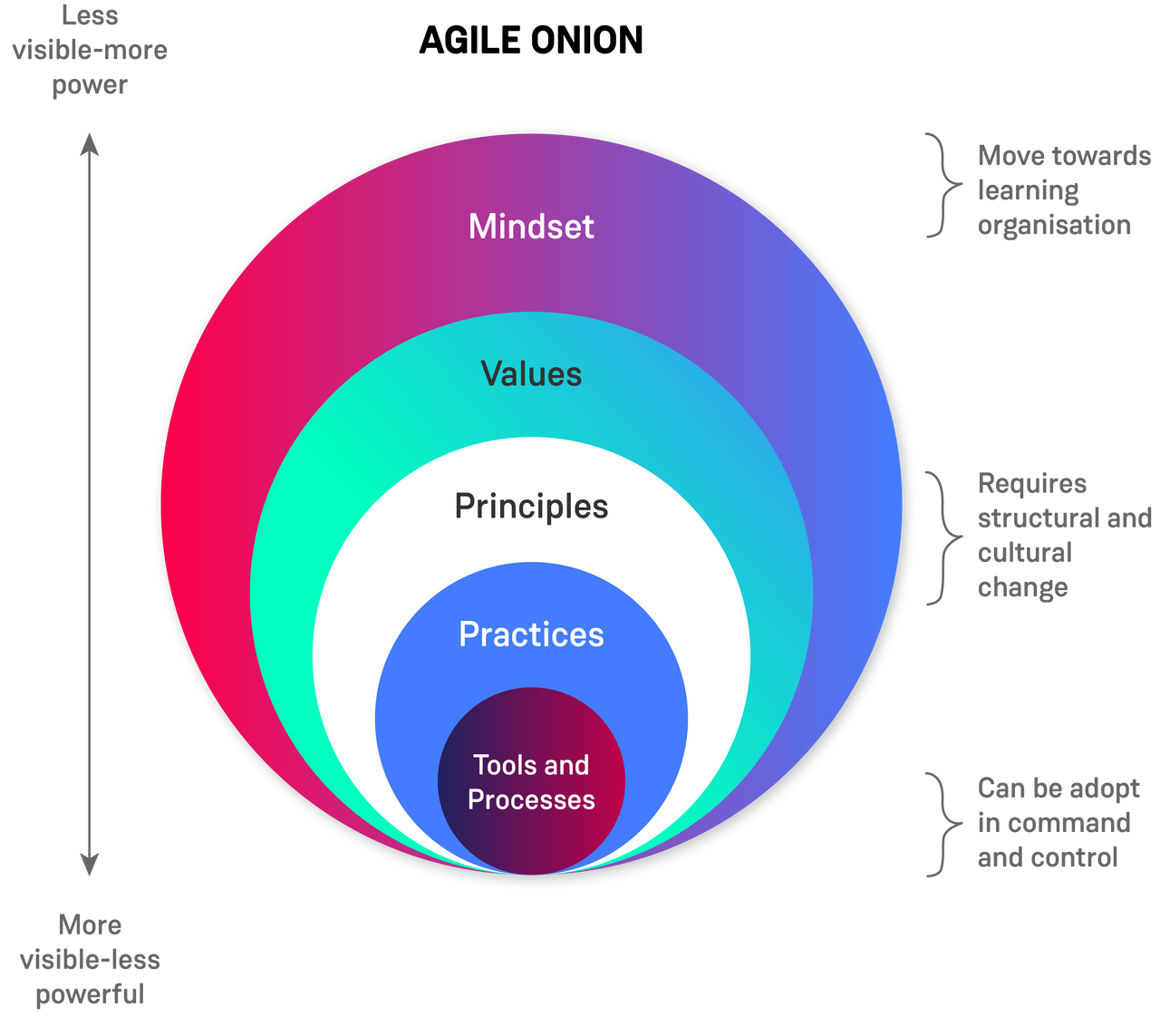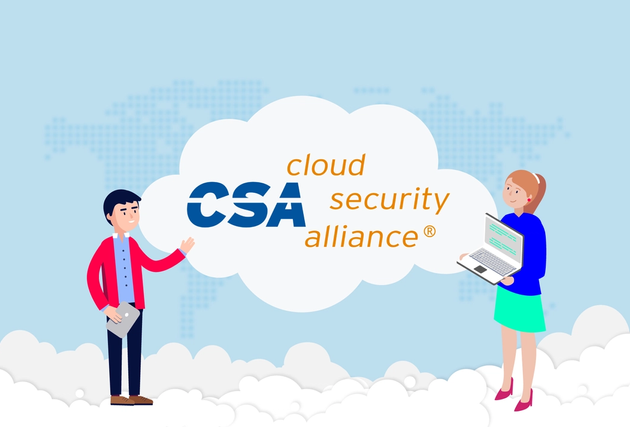5 Essential Steps You Need to Take For a Painless Agile Maturity Assessment
Your company or your client is about to embark on a digital transformation and you are there to help kickstart the process.
One of the key aspects for a successful transformation is to understand that it encompasses far more than a change in technology; it often requires a fundamental shift in the ways of working and in the company culture itself.
Understanding your Agile maturity is an important first step to take before you can plan out your transformation.
There are many questions to ask, for example: Is the organisation focused on outcomes or on outputs? Is everyone free to voice their concerns or are people quiet because they are afraid of repercussions? These are some of the elements that will be assessed through an Agile Maturity Assessment.
In this blog, we will cover why it is important to perform an Agile Assessment and five simple steps to successfully perform one.
Agile Maturity
Before we get into the Agile Maturity Assessment we need to understand what Agile maturity is and why it is key to understanding and delivering a successful digital transformation.
Simon Powers, CEO and founder of “Adventures with Agile”, explains agile maturity using the Agile Onion:
Like an onion has different layers, a company has different levels of Agility; some of those levels like practices or tools and processes can be adopted without a structural and cultural change within the organisation. The closer an organisation is to having an Agile mindset (mind of a child, inquisitive, trusting and not afraid to experiment) the higher the Agile maturity of that company.
For Contino, digital transformation is about changing mental models and creating a space where people can change their mental models. You can think in a more systematic way using the iceberg model, so you can uncover the 90% invisible structures that you can link to any event within the organisation. Through the Agile Maturity Assessment, you can find out the trends over time (patterns of behaviour), the relation between the parts of the business and what influences those relations (system structure) and the values, assumptions and beliefs shaping the system (mental models).
Depending on where the company is in terms of Agile maturity you will focus the first steps on your digital transformation differently. This is why it’s vital to carry out an Agile Maturity Assessment.
What Is an Agile Maturity Assessment?
An Agile Maturity Assessment is the process of gathering and documenting information from multiple sources in order to understand where the organisation is on its Agile path. This information can be gathered from individual interviews, team surveys, observations and workshops.
The Agile Maturity Assessment is used to plan and refine the different areas assessed to help the organisation mature on its Agile journey. We usually assess every team separately as the Agile Maturity can be very different among teams within the same organisation.
The areas we typically cover during an Agile Assessment are:
Culture and Values
We assess in this area if there is a culture of improvement within the organisation including the team’s motivation and appetite to improve. The range can vary from “no action is taken to improve effectiveness” to “having a persistent focus to improve.”
We also verify how failures are handled, if there is a culture of blame in a team or if they have a “fail fast and learn faster” mentality. Transparency is an important value to check within an organisation, is the progress visible and accessible to everyone in the organisation?
We observe how the teams work, if every team member has a desire to work as an Agile team or as a team of individuals. As well as how the team owns resolution of issues and blockers. The ideal would be to have the focus of the team in achieving predictability and sustainability in delivery.
Agile Fundamentals
Adoption of the standard events for the Agile framework chosen e.g. if Scrum is the chosen framework: sprints, sprint planning, sprint review, retrospectives; and tweaking the ceremonies as they suit the team adapting the framework to their needs.
Do we have cross-functional teams who are small enough to remain nimble and large enough to complete significant work within one iteration?
Following software engineering best practices is also part of the Agile fundamentals; does the team have the ability and the desire to actively reduce the level of technical debt present in the system?
Teamwork and Collaboration
We assess here how the team communicates and whether they use the most appropriate style to achieve the required outcome quickly, effectively and uniformly. Ideally the team should be working collaboratively to deliver the sprint goal and not working individually in silos.
We also assess the level of hand-offs within the development team when delivering usable increments in sprints; a mature team would be leading the organisation towards minimising all hand-offs. It is important to have the ability to work effectively as an Agile team regardless of locations and time zones; this is one of the keys to success for teamwork and collaboration.
Incremental Delivery and Small Batches
Is every team in the organisation creating potentially shippable increments sprint on sprint? Is the work being broken down into and within tickets? How is the organisation managing prioritisation?
Ideally we are looking for a shared programme backlog(s) prioritised consistently to maximise program value realisation. We cannot forget about quality while we try to do incremental delivery in small batches; working software needs to meet the definition of done (DoD) consistently and delivered regularly at least once on every iteration.
Uncertainty Management and Variable Scope
We assess in this area the presence of backlogs, with highest organisational value items only. Does the organisation have a longer term planning approach guided by velocity and learning?
We also assess how the scope is handled, we are looking here for variable scope managing uncertainties and allowing early benefit realisation.
Product Focus Vs Project Focus
Does the team have a Product Owner who follows best practices? We also assess the mentality of the team (and the organisation in general) about product vs project. The more Agile an organisation is, the bigger the product focus is.
These are typical areas to assess on an Agile Maturity assessment, sometimes you might want to have a broader remit for the assessment so you can cover DevOps as well; in that case you would deep dive into other areas like security practices, test automation, CD/CI pipelines, infrastructure automation and infrastructure as code, microservice architecture, expertise in private or public cloud and how quickly teams respond to broken builds.
5 Essential Steps to Perform an Agile Maturity Assessment
Within organisations, the Head of Transformation, Digital Director or CTO would be interested in getting Agile Maturity Assessments for every business area, in order to plan the next steps of their digital transformation journey. Recommendations about who should perform the Agile Maturity Assessment vary between hiring some enterprise coaches and transformation consultants; and partnering with a digital transformation expert like Contino.
In both cases, we recommend these five essential steps to perform an Agile Maturity Assessment:
1. Preparation
It’s no surprise that the best way to successfully perform an Agile Maturity Assessment is to prepare for it correctly. You should have some video calls with the client so they can give you an overview of that business area, how many teams are there and how they interact.
The kind of information you expect to get from the client at this stage is:
- Organisation structure: Teams/Roles/Programme wrap, so we can understand the how the teams work
- Architecture: High-level and low-level designs so we can evaluate if the team structures are optimised for the architecture and vice versa
- Portfolio of work, demand management, artefacts and governance process: This is helpful to understand if the demand flow is maximising current team structures and architecture
- Planning and Reporting: Access to data, Jira, Azure DevOps or any backlog management tool they used, project plans, roadmaps, test data reports. We can generate visual representation with them to understand team boundaries and interactions between teams
- Tools: Technology stack, engineering practices/tooling, so we can assess areas of improvement and also areas where the teams are following industry best practices
- Documentation: Programme reporting artefacts, internal documentation / knowledge portals, so we can assess the degree of transparency and alignment between teams, metrics, documentation and business goals
Having this information before starting with the assessment will help us to prepare properly for the next steps to perform an Agile Maturity Assessment:
- Create a self assessment survey tailored across Agile/DevOps maturity
- Create a tailored role-based interview questionnaire and plan the schedule
- Begin any early metrics-based analysis to inform our approach or identify current hotspots to focus on
2. Surveys Pre-Assessment
With the information gathered on the previous step we can tailor the surveys to align with client expectations and the focus areas we spotted during the previous calls with the client.
There are different pre-assessment surveys that you could use. Some are focused on getting information at a team level about Agile Practices and psychological safety; others focus on assessing the Agile Maturity alongside the DevOps maturity of the teams.
You can also send some surveys that are focused on psychological safety to be completed by every individual of the areas you are going to assess.
These surveys allow us to gather data about how the teams and individuals in the business area assess their Agile maturity and psychological safety. Using this data will then help you schedule the interviews and with an initial idea about their maturity level.
3. Interviews
Based on the data you have already gathered you will schedule interviews to be held in the first two weeks of the assessment period.
We recommend that you don’t schedule more than four interviews per day. Take the time to digest the information and adapt the questions for every interview based on the data you already have.
We also recommend performing the interviews in a conversational way and to avoid just firing questions to get answers. In the interviews, you will need to ensure you are covering every function present within the team so you can have the full view of the team’s ways of working and Agile Maturity.
After the interviews and the pre-assessment surveys you will have a view of their Agile Maturity, but that view won’t be complete until we perform the following steps.
4. Observations
You have the data from the pre-assessment surveys and the interviews. This gives you an idea of the Agile Maturity of that business area but you need to corroborate that idea and view whether the practices you’ve been communicated are actually followed by the teams.
Attend several team meetings and also some cross-team meetings. Attending meetings with an observer role is a good way to spot patterns and anti-patterns of Agility. This information will help you prepare the workshops and also start preparing the assessment findings.
One thing to note here is that these five steps are not one-off steps. You might want to come back and perform some interviews after you have observed several meetings.
5. Workshops
The last step to gather data and assess the Agile maturity of the business area. A key workshop to be held is Value Stream Mapping, which will provide you with the following:
- Surfacing the totality of effort required to deliver
- Understanding flow/emergent queues/system constraints
- Understanding team topologies
- Identify dependencies causing waiting times
- Exposing handoffs/boundaries causing silo-ed thinking to emerge or waste developing in the system
- Framing the declarative versus imperative organisation that is delivering the work
Note that the workshops are not a final step; they are only one step that helps you assess the Agile maturity. Once you have completed all the steps you should be able to present your findings back to the client.
Common Mistakes
These are some of the common mistakes I have seen (and sometimes made) in the past while performing Agile Maturity Assessments.
- Dedicating too little time to perform the assessment: Once I had to perform a DevOps and Agile Maturity assessment on a portfolio having access to the team for only one week!
- Not performing a value stream mapping workshop: The amount of information you can get from this workshop will help you prepare the recommendations for the business area to improve their Agility after the Agile Maturity Assessment.
- Not having regular checkpoints with the client while performing the Agile Maturity Assessments: It is important to validate your findings and share them with your client. Performing a 6-8 weeks Agile Maturity Assessment and displaying only at the end of that period your findings and recommendations might result in client's disappointment and it will reduce the success of the digital transformation.
- Focusing on the negatives during the checkpoints with the client and at the end when you playback your findings and recommendations. Doing so can affect a team’s morale. If you recognise the good practices they are already doing, they will be more receptive to listen to the areas of improvement you have spotted while performing the assessment.
What to Do Next
Typically our approach to perform this assessment will allow us to benchmark the organisation’s “Engineering and Ways of Working Maturity” for their teams across the following domains:
- Team topologies and team of teams
- Move from project to product
- Demand flow and ownership
- Engineering excellence
The key deliverables you can expect from us would be:
- Assessment of the organisation development teams
- Analysis of the current practices and “Ways of Working” within the organisation, including:
- Value stream maps
- Demand management & fulfilment processes
- Current gaps in engineering maturity
- Recommendations and Roadmaps
- How to transition the teams to product teams
- Key product & engineering interventions for the client to prioritise
- Lighthouse setup
- Recommended setup for a “Prove it” phase, find out more about our Momentum Framework here
In Summary
Performing an Agile Maturity Assessment is key to understanding the areas of improvements and the reasons why the business area is not achieving business goals. The five steps to successfully perform an Agile Maturity Assessment are: Preparation, Pre-assessment surveys, Interviews, Observations and Workshops.
The value you get from an Agile Maturity Assessment will help you on your journey to a successful digital transformation. Do you want to discuss further about Agile Maturity Assessments, our Momentum framework or want to know how Contino can help you? Please, get in touch!








